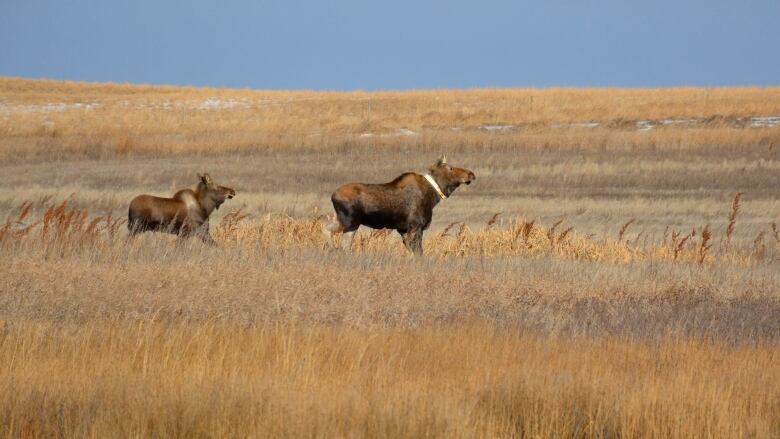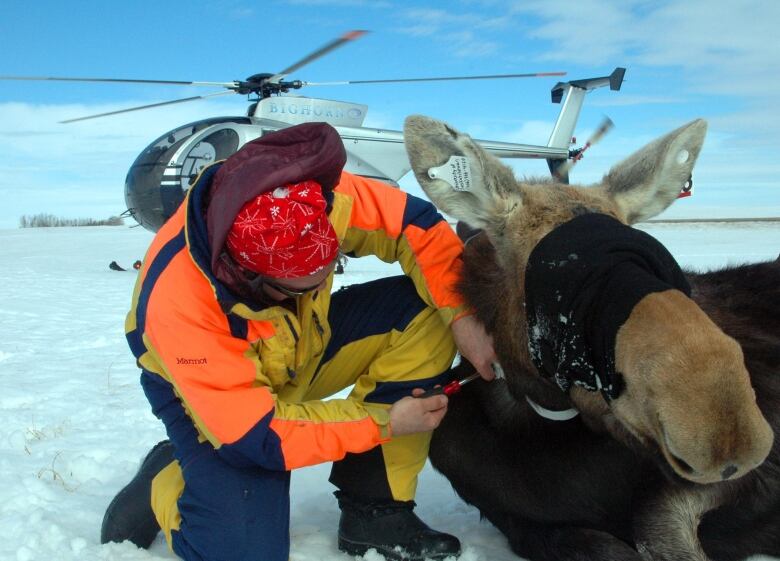Moose mystery probed by Saskatchewan researchers
A research project studying moose on the Saskatchewan prairies will be completed this spring

Moose are on the move this time of year in Saskatchewan and some are being tracked by wildlife researchers.
It's part of the Saskatchewan Farmland Moose Project at the University of Saskatchewan.
Fifty adult female moose between Saskatoon and Regina were fitted with satellite collars in 2013.
When I moved here six years ago. We saw these moose crossings on the highway and I took a photo because I didn't even know it was possible.- Ryan Brook, lead supervisor for the Saskatchewan Farmland Moose Project
Researchers are studying moose habitat and movement in Saskatchewan. Once all the data is collected, they hope to learn where moose cross highways and how they interact with the prairie landscape.The location of a collared moose is sent to scientists every hour.
"[We're] really trying to understand the whole notion of moose showing up in farmland because of course this is a new phenomenon,"said Ryan Brook, lead supervisor for the Saskatchewan Farmland Moose Project.
"Everybody has always thought, and I always thought, that moose belong in the boreal forest or in the aspen forest," he said. "The fact that they are occurring here is a new thing.When I moved here six years ago, we saw these moose crossings on the highway and I took a photo because I didn't even know it was possible."
Over the last 30 years, moose populations have spread from forested areas to farm land. The study area between Saskatoon and Regina has less than one per cent of forest coverage.
"There will be [moose] generations that don't know what forest really looks like," said Brook.
Pothole wetlands, which are small marshes with trees, provide moose with a habitat on the prairies. They eat select crops like field peas, alfalfa, and flax.
"There's everything they need. Why move? And the likelihood of predators is very low," said Brook.
Moose movements do spike during the fall.
Both females and males are very mobile during breeding season and Brook said collision data shows that vehicle accidents with moose increase during the mating season.
One collared moose was hit on Highway 11 during the study.

"Animals are more concerned about finding love than staying safe so they do some silly things sometimes," said Brook.
While moose populations have been declining in other parts of North America, they have been thriving in Saskatchewan.
Brook and his team have a few theories about that. The Saskatchewan prairies lack big predators like bears and wolves and pothole wetlands allow moose to keep cool in the warming climate.
"If we lose that water, we may lose that farmland moose," said Brook.
The project is near the end of the data collection stage and only three collars remain active. A final report will be released in the spring of 2016.












_(720p).jpg)


 OFFICIAL HD MUSIC VIDEO.jpg)
.jpg)



























































































